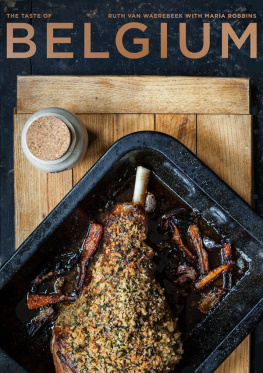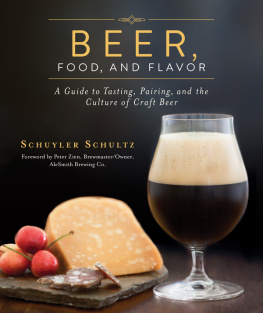Table of Contents
JEREMY P. TARCHER/PENGUIN
a member of Penguin Group (USA) Inc.
New York
JEREMY P. TARCHER/PENGUIN
Published by the Penguin Group
Penguin Group (USA) Inc., 375 Hudson Street, New York, New York 10014, USA
Penguin Group (Canada), 90 Eglinton Avenue East, Suite 700, Toronto, Ontario M4P 2Y3, Canada
(a division of Pearson Canada Inc.) Penguin Books Ltd, 80 Strand, London WC2R 0RL, England Penguin Ireland,
25 St Stephens Green, Dublin 2, Ireland (a division of Penguin Books Ltd) Penguin Group (Australia),
250 Camberwell Road, Camberwell, Victoria 3124, Australia (a division of Pearson Australia Group Pty Ltd)
Penguin Books India Pvt Ltd, 11 Community Centre, Panchsheel Park, New Delhi-110 017, India
Penguin Group (NZ), 67 Apollo Drive, Rosedale, North Shore 0632, New Zealand
(a division of Pearson New Zealand Ltd) Penguin Books (South Africa) (Pty) Ltd,
24 Sturdee Avenue, Rosebank, Johannesburg 2196, South Africa
Penguin Books Ltd, Registered Offices: 80 Strand, London WC2R 0RL, England
Copyright 2009 by Madeline Scherb
Illustrations copyright 2009 by Glenn Wolff
All rights reserved. No part of this book may be reproduced, scanned, or distributed in any printed or electronic
form without permission. Please do not participate in or encourage piracy of copyrighted materials in violation of
the authors rights. Purchase only authorized editions. Published simultaneously in Canada
Most Tarcher/Penguin books are available at special quantity discounts for bulk purchase for sales promotions,
premiums, fund-raising, and educational needs. Special books or book excerpts also can be created to fit specific needs.
For details, write Penguin Group (USA) Inc. Special Markets, 375 Hudson Street, New York, NY 10014.
Library of Congress Cataloging-in-Publication Data
Scherb, Madeline.
A taste of heaven : a guide to food and drink made by monks and nuns / Madeline Scherb.
p. cm.
eISBN : 978-1-101-13339-2
1. Cookery, International. 2. Alcoholic beverages. 3. Monastic and religious life. I. Title.
TX725.A1S
641.59dc22
The recipes contained in this book are to be followed exactly as written. The publisher is not responsible for specific health or allergy needs that may require medical supervision. The publisher is not responsible for any adverse reactions to the recipes contained in this book.
While the author has made every effort to provide accurate telephone numbers and Internet addresses at the time of publication, neither the publisher nor the author assumes any responsibility for errors, or for changes that occur after publication. Further, the publisher does not have any control over and does not assume any responsibility for author or third-party websites or their content.
http://us.penguingroup.com
For my parents, Frank and Margarita Scherb,
and in loving memory of Brother Raphael Prendergast, OCSO,
Abbey of Gethsemani
FOREWORD
They are truly monks when they live by the labor of their hands, as did our fathers and the apostles.
RULE OF SAINT BENEDICT, CHAPTER 48
Food should be treated with respect since Our Lord left himself to us in the guise of food.
DOROTHY DAY
The early monks supported themselves by the work of their hands, usually weaving mats, hats, rugs, baskets, and other products that they later sold at nearby local markets. Work is an integral part of all human life, be it inside or outside a monastery. Therefore, monks seriously apply themselves to the humble task of earning their living, not wishing to beg or be a burden to anyone.
What differentiates the monks approach to work from that of others is the attitude he brings to it. Monastic work is functional. It is not motivated by a desire for a career or for success, and even less by greed. The first function of monastic work is that it be in the imitation of Jesus and Saint Joseph, the humble carpenters of Nazareth. Along with Mary, they give us an example of how to live and order the pattern of our lives. The second function of monastic work is to provide for the monastery and those who inhabit it. The third important aspect of all monastic work is the element of balance that work brings to the daily rhythm of monastic life.
A Taste of Heaven is the result of a personal monastic pilgrimage. It gives the reader a glimpse into the unique life of some of the most remote monasteries of both Europe and the United States. The book tells the tale of the histories, practices, and artisanal products of these monasteries and explores the stories of the monks and nuns who live, work, and worship within their walls. It reads like a virtual tour of these places of profound silence. Its pages, filled with gentle anecdotes particular to each monastery or monastic figure, should be read quietly, as a form of guided meditation.
The author also does all of us a great service by making available an exquisite collection of recipes derived from various monasteries. These recipes have as their source the many different products traditionally made by monks and nuns: cheese, ales, wines, liqueurs, olive oil, chocolates, vinegars, tapenades, herbs, candies, and baked goods. In following these recipes and making use of these products, we discover the secret character of monastic cookery: a cuisine known for its simplicity, sobriety, and basic good taste. Individuals such as the author who have partaken in the gracious hospitality of the monasteries mentioned in this book can attest to the healthy, balanced diet practiced by monks and nuns. In most cases the food presented at the monastery table consists of products from the monastery farms and gardens, coupled with local produce prepared with a great deal of love and presented with simplicity. Such simplicity need not preclude elegance; in fact, monks and nuns believe that simplicity itself is synonymous with elegance.
I trust the reader will be inspired by the beautiful stories in this book to discover the products made not only by the monasteries mentioned here, but also by those monasteries located closer to their homes. Many monasteries, including ours, sell their products at local farmers markets or at annual festivals, such as our Summer Vinegar Festival and Christmas Fair. People appreciate having these products made readily available to them. These days they can even be purchased online. Whatever the case, the reader contributes directly to the livelihood of monasteries by appreciating and purchasing their products. May this always be, so that, in Saint Benedicts words, God may be glorified in all things.
BROTHER VICTOR-ANTOINE DAVILA-LATOURRETTE
November 13, 2008
Feast of All Monastic Saints
La Grangeville, New York
INTRODUCTION
Bells are the heartbeat of abbey life. They call the community to prayer throughout the day. They can be loud or soft, joyful or soulful. A new bell becomes part of the monastic family in a kind of bell baptism: it is blessed and is sometimes named after a saint. When the monks of Stift Heiligenkreuz in Austria recently climbed the pop charts with their recordings of chant, they even included the abbeys bells in between songs.
However, a guest who stays at an abbey overnight may feel something other than love for the bell that tolls around three a.m. for Vigils, the first prayer service of the day. This is especially true at Gethsemani Abbey in Kentucky, where the formidable bell can make a bleary-eyed guest feel like one has been tied to the clapper in a plot invented by Charlie Chaplin.










